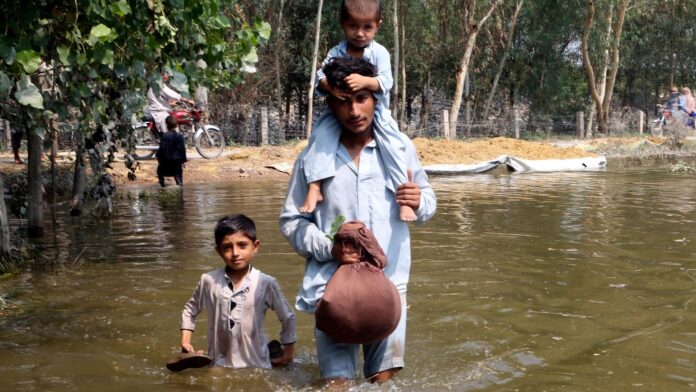ISLAMABAD: The United Nation’s Agency for Children warned more than 10 million people, including children, living in flood-affected areas remained deprived of safe drinking water, six months after the devastating floods ravaged parts of Pakistan.
In a new release on World Water Day, Unicef said that the floods damaged most of water systems in affected areas, forcing more than 5.4 million people, including 2.5 million children, to solely rely on contaminated water from ponds and wells.
“Six months after catastrophic floods … more than 10 million people, including children, living in flood-affected areas remain deprived of safe drinking water, leaving families with no alternative but to drink and use potentially disease-ridden water,” it said.
Even before the floods, the news release said, despite the country’s drinking water supply system covering 92% of the population, only 36% of the water was considered safe for consumption.
“Safe drinking water is not a privilege, it is a basic human right,” said Abdullah Fadil, the Unicef representative in Pakistan. “Yet, every day, millions of girls and boys in Pakistan are fighting a losing battle against preventable waterborne diseases and the consequential malnutrition,” he continued.
“We need the continued support of our donors to provide safe water, build toilets and deliver vital sanitation services to these children and families who need them the most,” Fadil added.
The prolonged lack of safe drinking water and toilets, along with the continued proximity of vulnerable families to bodies of stagnant water are contributing to the widespread outbreaks of waterborne diseases such as cholera, diarrhoea, dengue, and malaria.
At the same time, open defecation has increased by more than 14% in the flood-affected regions. To make matters worse, the lack of proper toilets is disproportionally affecting children, adolescent girls and women who are at added risk of shame and harm.
Besides, unsafe water and poor sanitation are key underlying causes of malnutrition. The associated diseases, such as diarrhoea, prevent children from getting the vital nutrients they need.
“Malnourished children are more susceptible to waterborne diseases due to already weakened immune system, which simply perpetuates a vicious cycle of malnutrition and infection,” the news release warned.
Tragically, it added, one-third of all child deaths globally are attributable to malnutrition and half of all undernutrition cases were linked to infections caused by a lack of access to safe water, adequate sanitation and good hygiene.
“In Pakistan, malnutrition is associated with half of all child deaths. In flood affected areas, more than 1.5 million boys and girls are already severely malnourished, and the numbers will only rise in the absence of safe water and proper sanitation.”




















